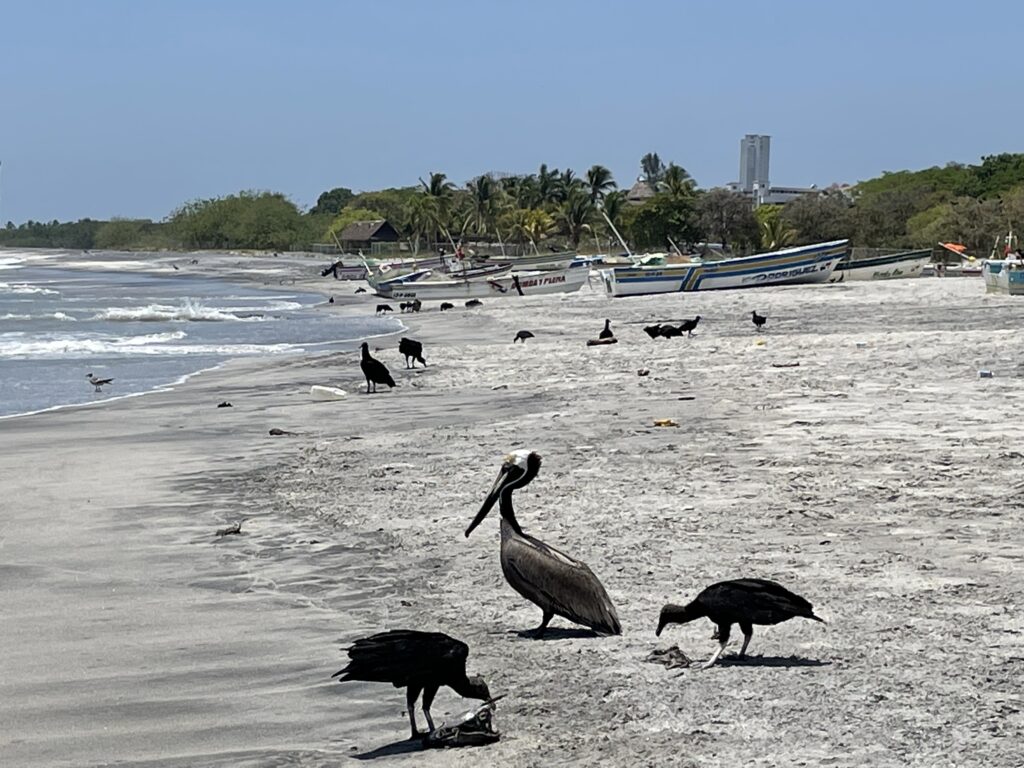

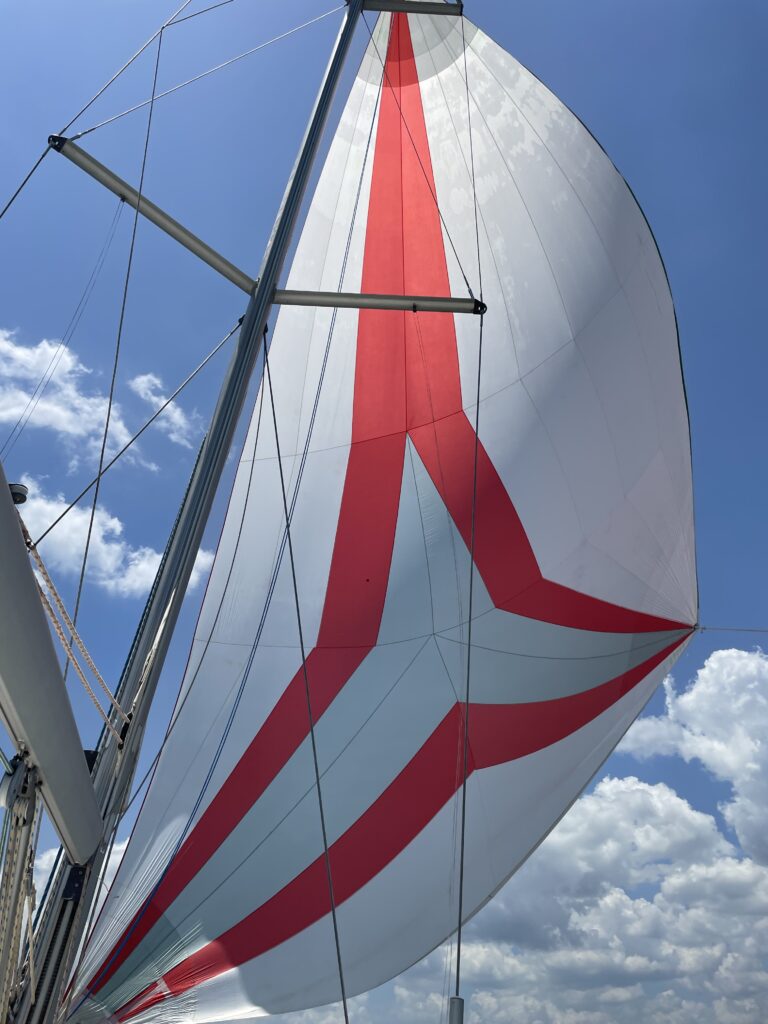
*Warning – this post was produced entirely on the phone, and not easily. Please forgive the hiccups as you find them, and the lack of pics.
Finally, after arriving in Panama 6 weeks ago, we are ready to farewell Central America and cross the Pacific. The boat is ready, or as ready as it will be. Filled with tinned and dry food, water, and deisel. Engine and systems are serviced – and spare parts at the ready.
Captain and crew are filled with optimism, butterflies, and a strong urge to leave the dock behind.
So, after a month of pretty solid prep work we are off!
The first leg across the Pacific might take 7 or so weeks, due to expected wind. After this first stretch of 4000 nm ( 7408 km) the remaining 4000 nm include more frequent opportunities for island stops.
To get to this point, there has been some preparation, as you can imagine. It began with being pleasantly surprised to find the boat in pretty good shape on our return, sans mould and cockroaches, and so the boat work could begin. The first three weeks were spent on land putting on new anti foul, changing a leaking seal, and a couple of other things best done out of the water. During this time we were not allowed to stay on the boat – and so enjoyed the hospitality of a dynamic Oz/Panamanian duo who help many cruisers, as well as letting out their front room.
Each morning we would trudge down to the marina and start the hot sweaty work, then back up in the evening, shower, and pretty much fall into bed to do it all again the next day. Acclimatising to the weather while working in the heat was a brutal process, as was toughening the feet to a practical thong standard. We can once again walk many miles in thongs, as well as scale rock walls, climb around the boat; basically anything one would usually wear runners for – we can do in thongs. ✅ #cruising!
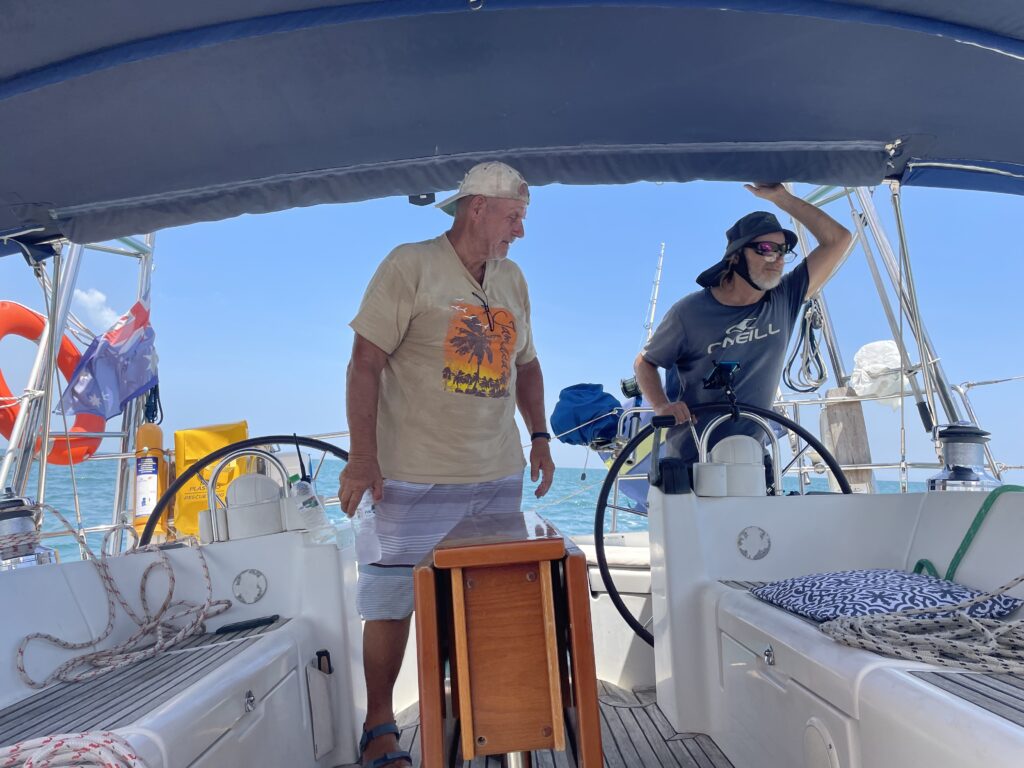
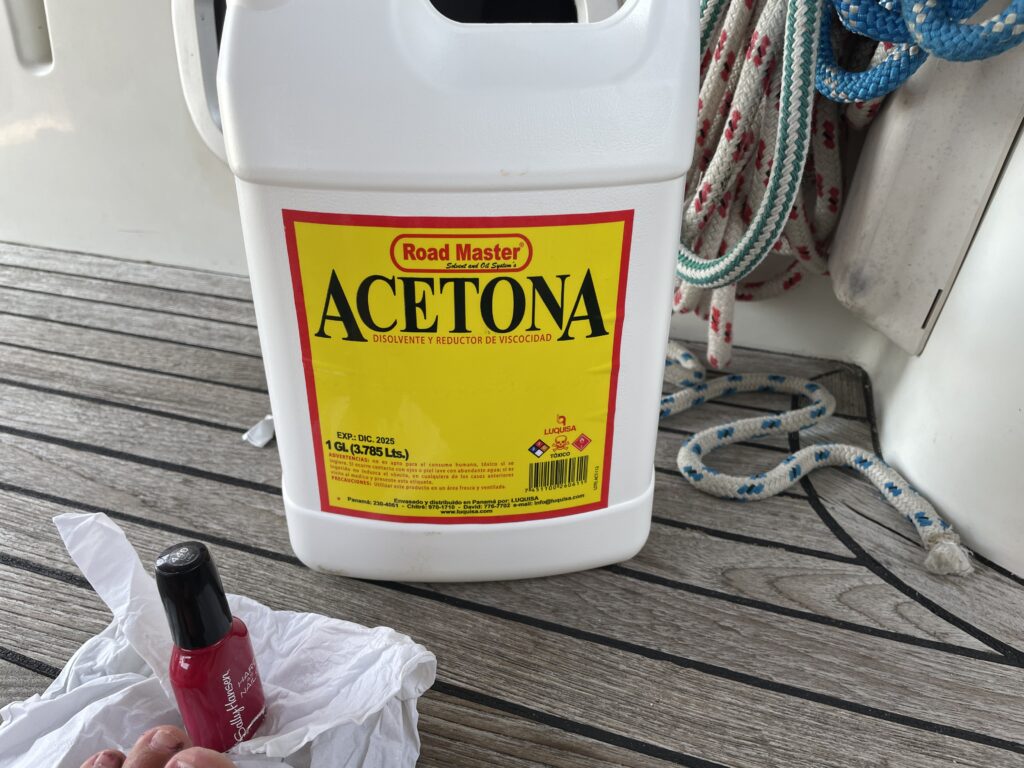
NEW EXPERIENCES
- Sailing with a gennaker. Lovely! We bought one from our Swedish friend Christer, due the extremely light winds predicted during our passage. Christer sailed with us and gave us a lesson in how to set it up and use it; a very informative couple of hours.
- Making yoghurt. A friend’s recipe and quick coaching session and voila! 2 good batches, and one fair batch, made with powdered milk. This will be fantastic during the crossing, especially as the fresh food runs out after the first few weeks.
HIGHLIGHTS
BEST - The joy of meeting old friends again, over a beer or coke on plastic chairs in the marina
- A cold shower at the end of a working day.
- The warmth and practical assistance we are surrounded by in the cruising community at the marina. Our lovely Canadian boat neighbors came over on several occasions when they saw us struggling with a task, loaned us tools and equipment, and even brought us food!
- Doing a test run with a life raft. We had fone this once on a course, but very useful to practice, hopefully uneccessarily.
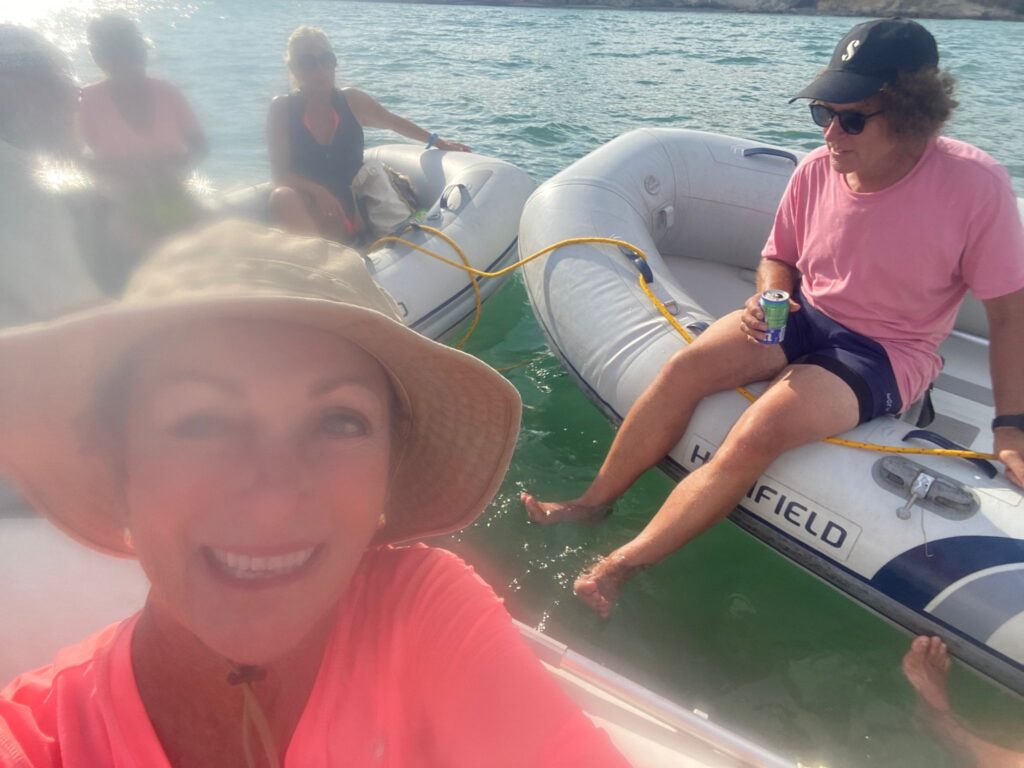
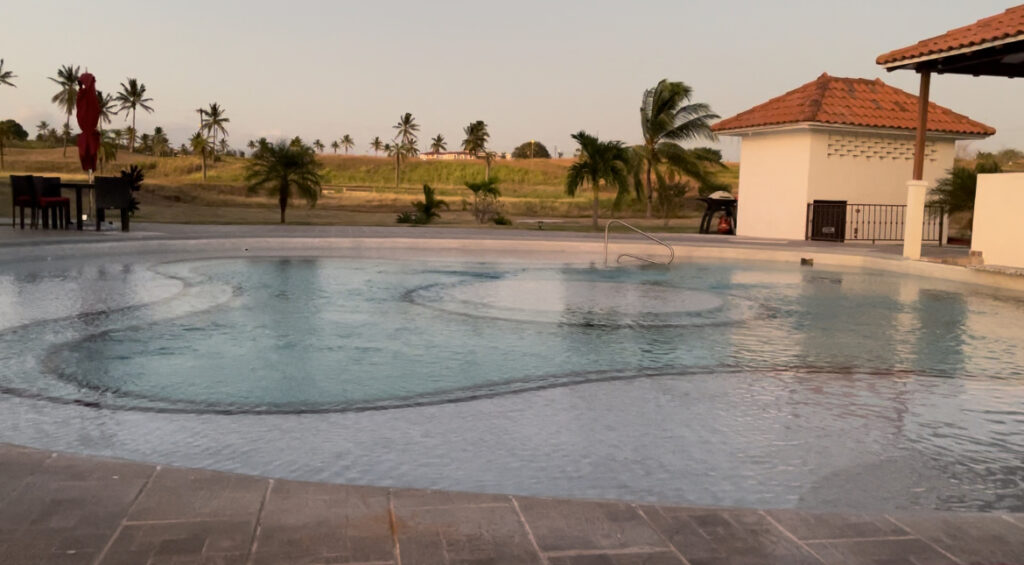
WORST
- Me.. when I dropped a VERY important pin into the water at the very last step of the long and complicated task. We had taken down the forestay, removed many small and large parts, (some with great difficulty) replaced the missing piece, and put the whole thing back together again. Phew! NOTHING had been dropped into the water – until that damn last pin, which was to hold it all up. Aarrgghh!!! While cursing myself, we asked Magic Milton to bring his dive gear and see if he could find it, and he did. In the meantime, the brains trust remembered that we had a spare. All’s well that ends well, despite a few minutes of vehement cussing on the dock .
FUNNIEST
- Practicing Spanish, mostly with taxi drivers, and a little with the marineros. My taxi conversation centres around family, being an “Abuela” is a good place to start. Then, after learning about their family, where they live etc, if I can understand enough, we get to other things, including sailing to Australia, where to buy specific tools, and one day even a man’s previous occupation as an aerobics instructor!
- Joining a “ dinghy drift” with other boaters. Basically you go for a putter upwind, beer in hand, and then drift back sharing popcorn and tall tales.
- The enormous tidal range in Panama means that the place where the boats go into the water at high tide is sometimes dry at low tide. I took many photos of the positioning of the largest rocks and tried to commit them to memory to help us navigate safely, but it was unnecessary as we went into the water on a 5 meter high tide.
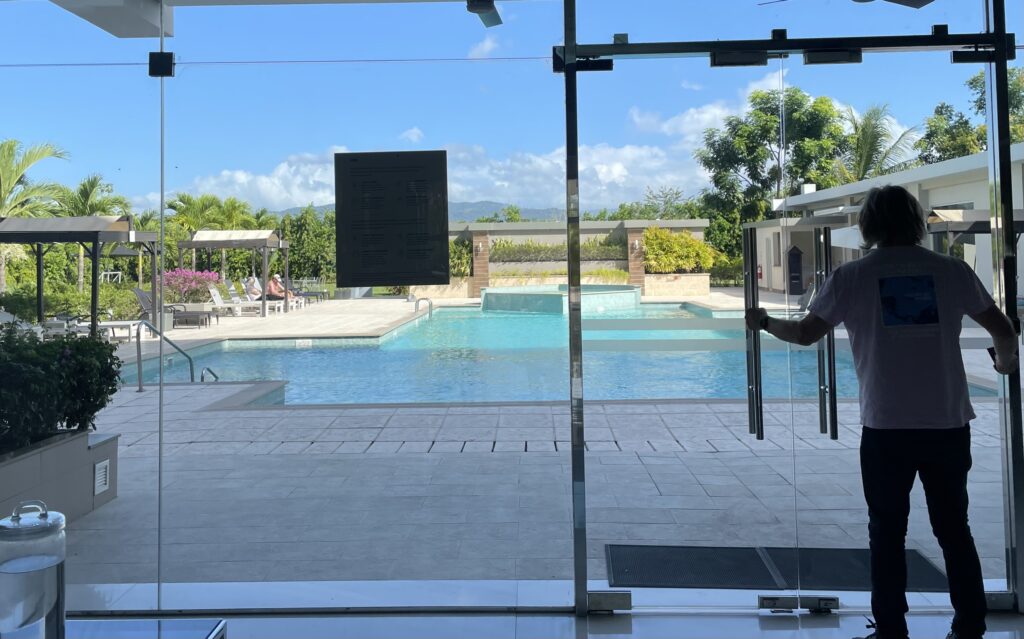

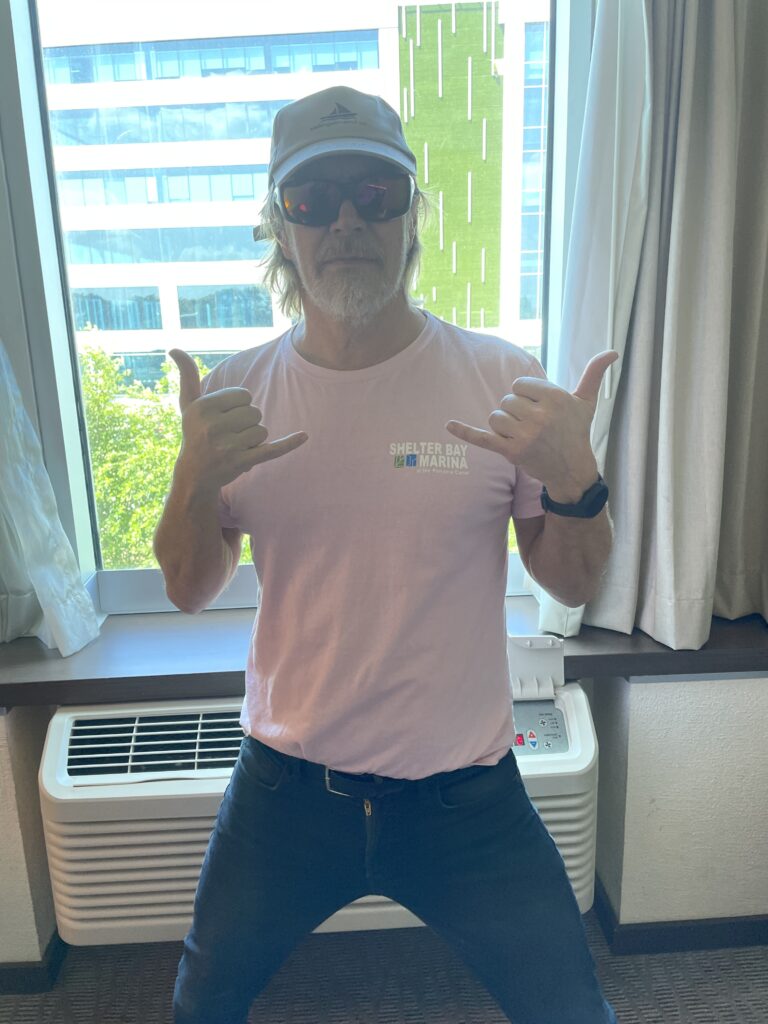
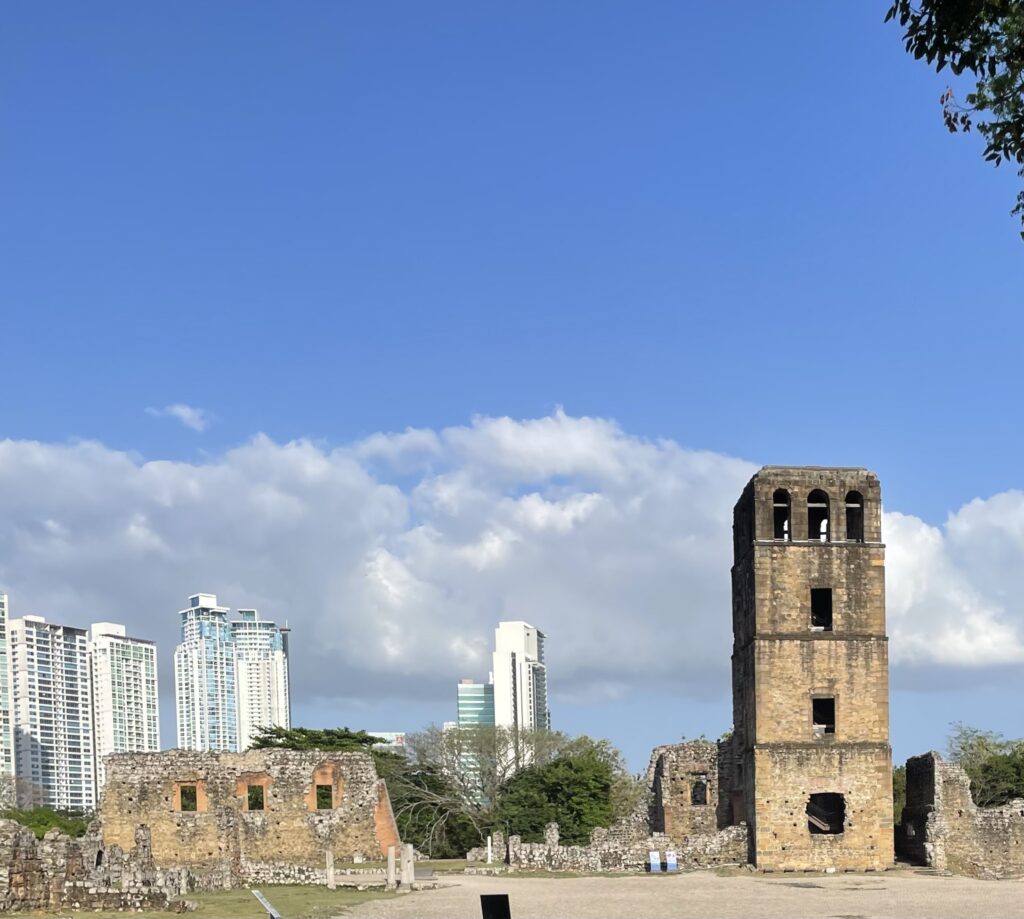
FOOD AND BEVVY HIGHLIGHTS
- Beef stir fry complete with incorporated french fries. Recommendend by a young English Professional Skipper. He had lingered long enough in the marina to have worked his way through the entire menu of the closest restaurant, and despite his surprise to find french fries in the stirfy – found himself ordering it again, and so did we!
- Our neighbor’s boat made cheesecake and “Pasta Frijole.” Both were produced mostly from pantry food, and were to die for.
- Panamanian salmon and capers shared with us by our lovely hostess Irma.
- Beer training – a serious subject. Could I really become an occasional beer drinker? Important question, because the cost of wine in restaurants is generally 3 times that of a beer. Water or softdrink are cheaper than wine but dearer than beer, and a dilemna ensues. Tap water won out – it’s free.
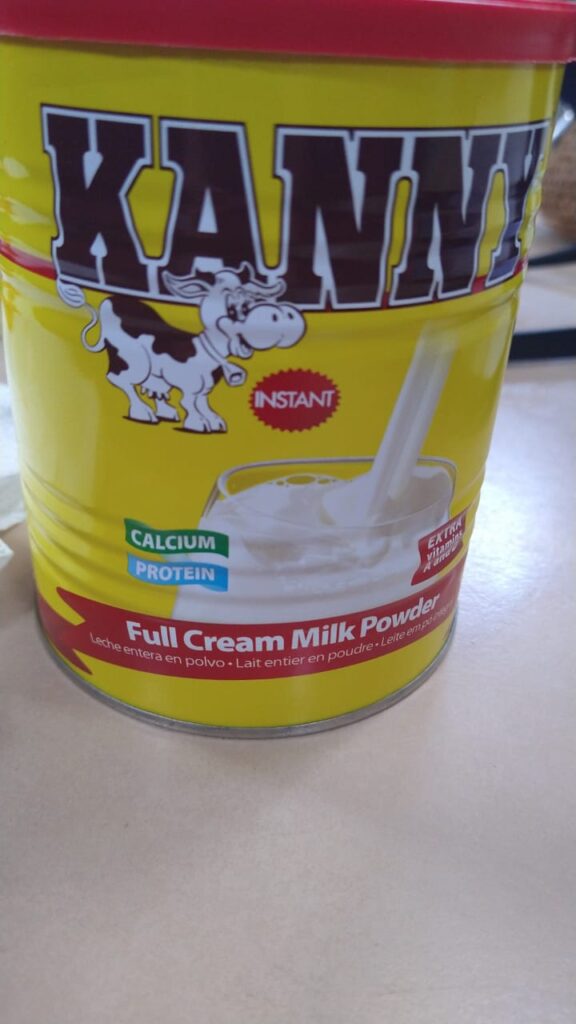
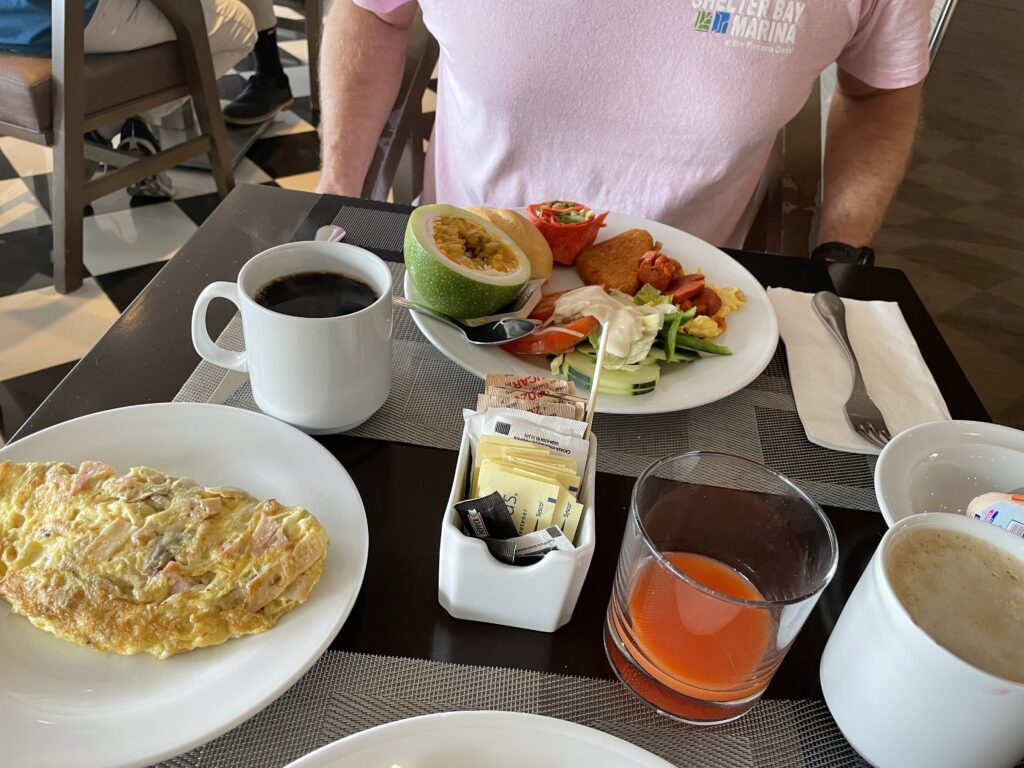
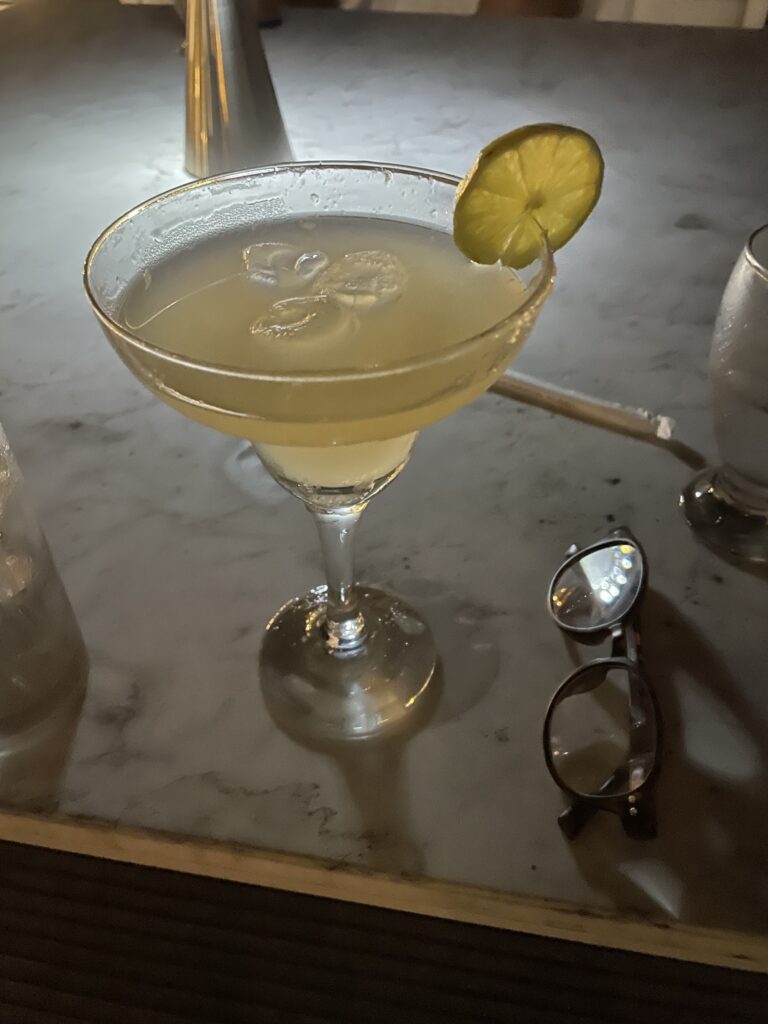
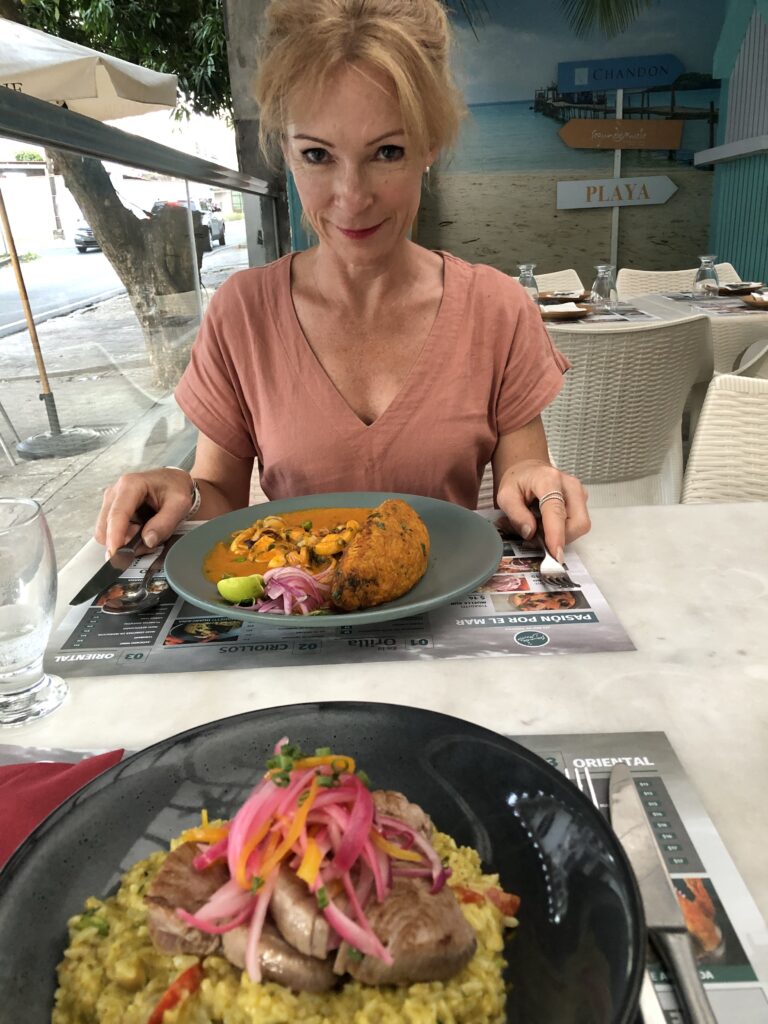
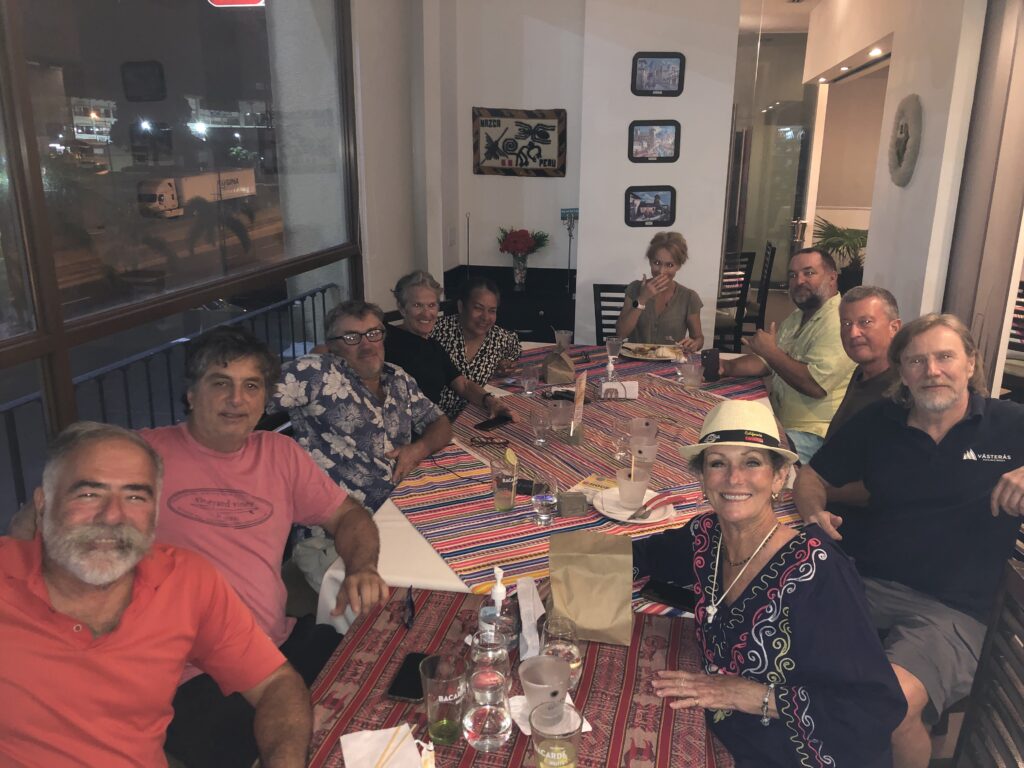
BOAT WORK
- Replace Genoa furler top.
- Anti foul
- Replace leaky prop shaft seal.
- Replace cutlass bearing.
- Refurbish water pump.
- Replace corroded screws in whisker pole track.
- Rigged new gennaker halyard.
- Installed new bilge alarm.
- Set up Iridium go satellite device.
- Repaired canvas.
- New lee cloths.
- Mounted new zinc anodes.
- Mounted a rope cutter on prop shaft.
- Patched rust and painted engine.
- Switched outboard engine to a 2 stroke.
- Patched dingy
- Made new dynema soft shackles.
- Made new side step from a recycled donated dinghy seat.
- Various small splicing projects, under the tutelage of two kind boaters.
- Bucketloads of general cleaning and maintenance.
- Bucketloads of general cleaning and maintenance.
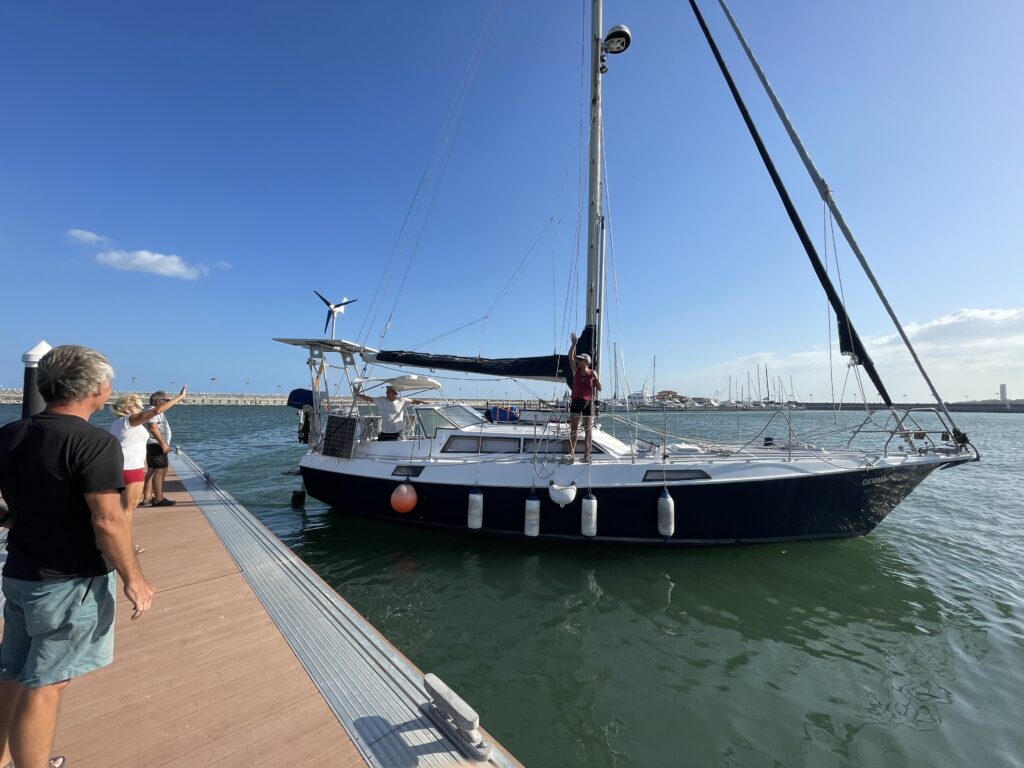
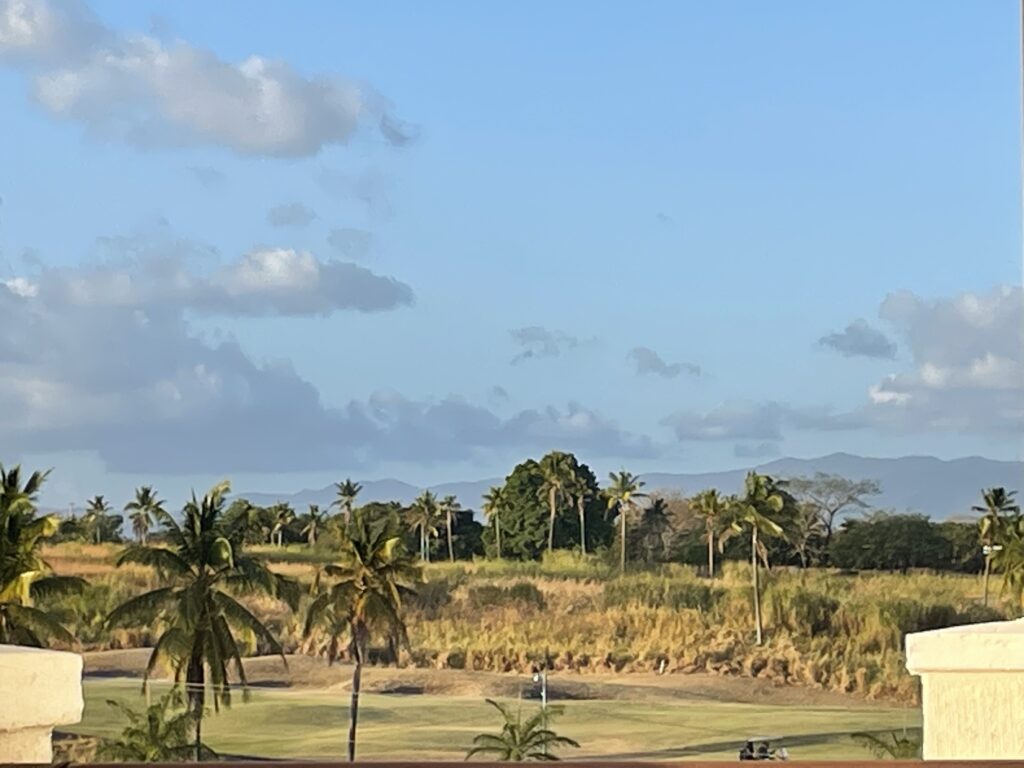
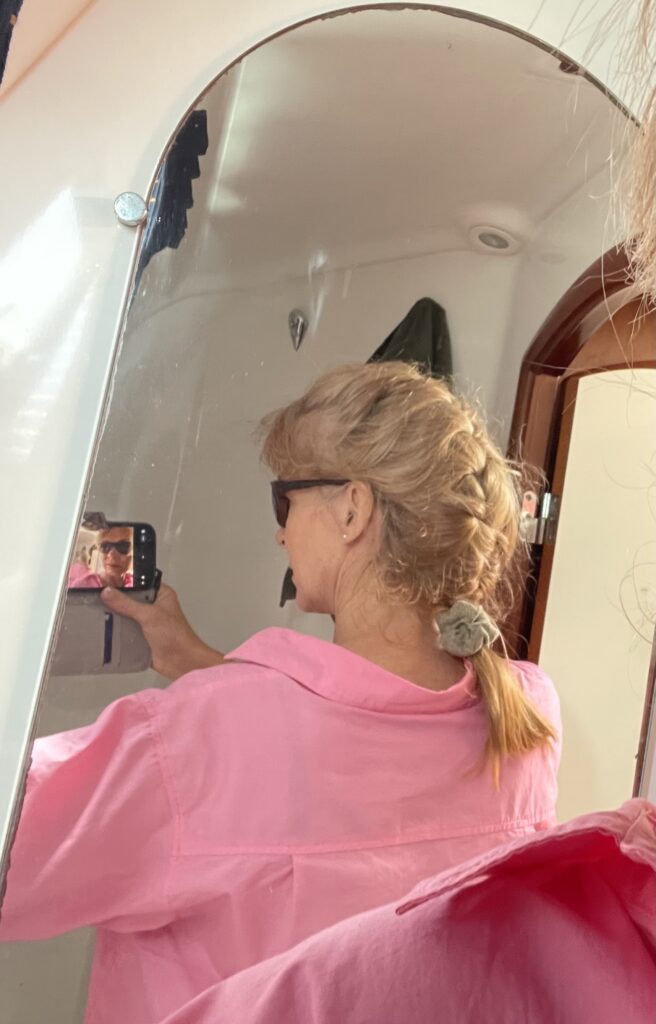
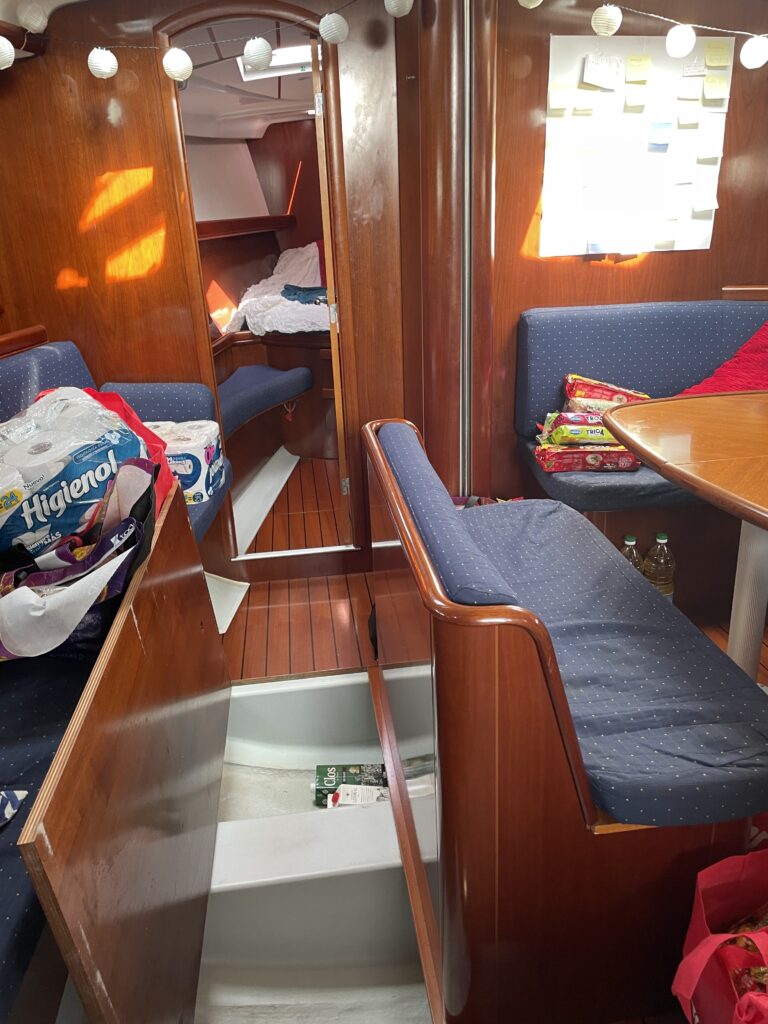

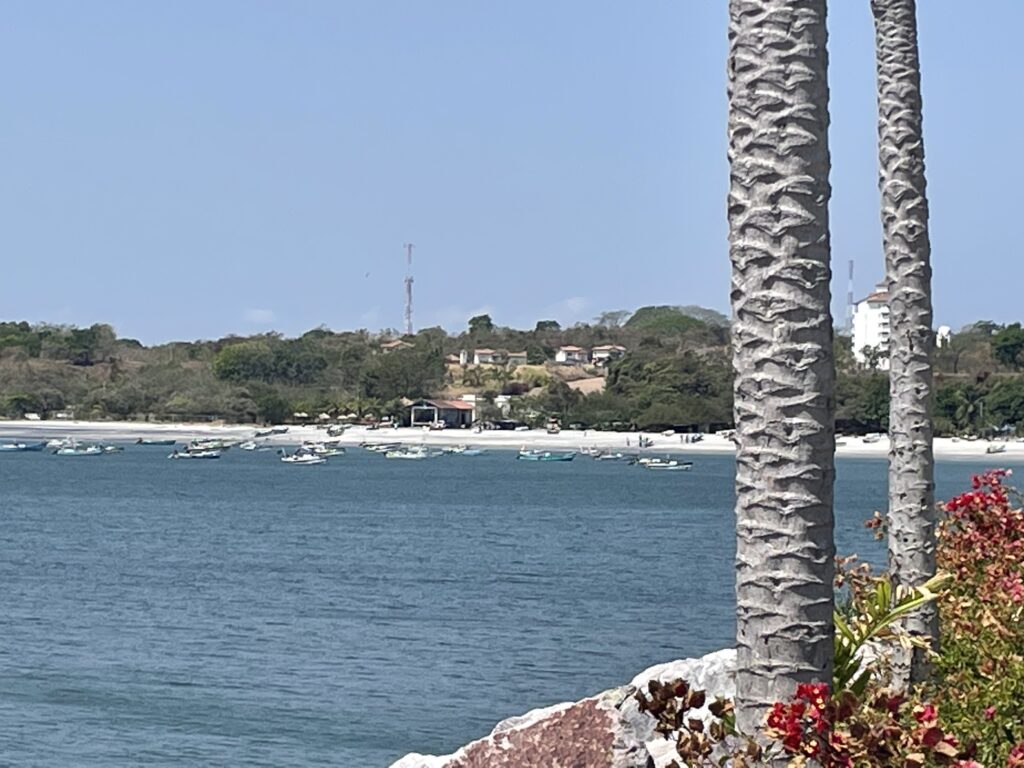
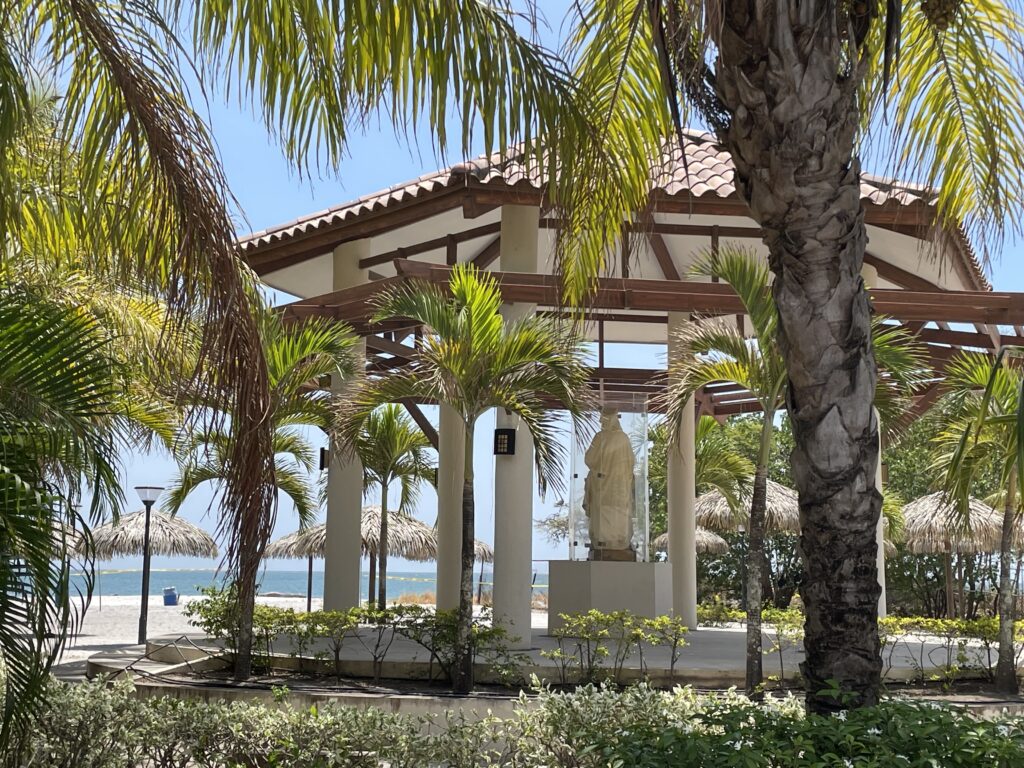
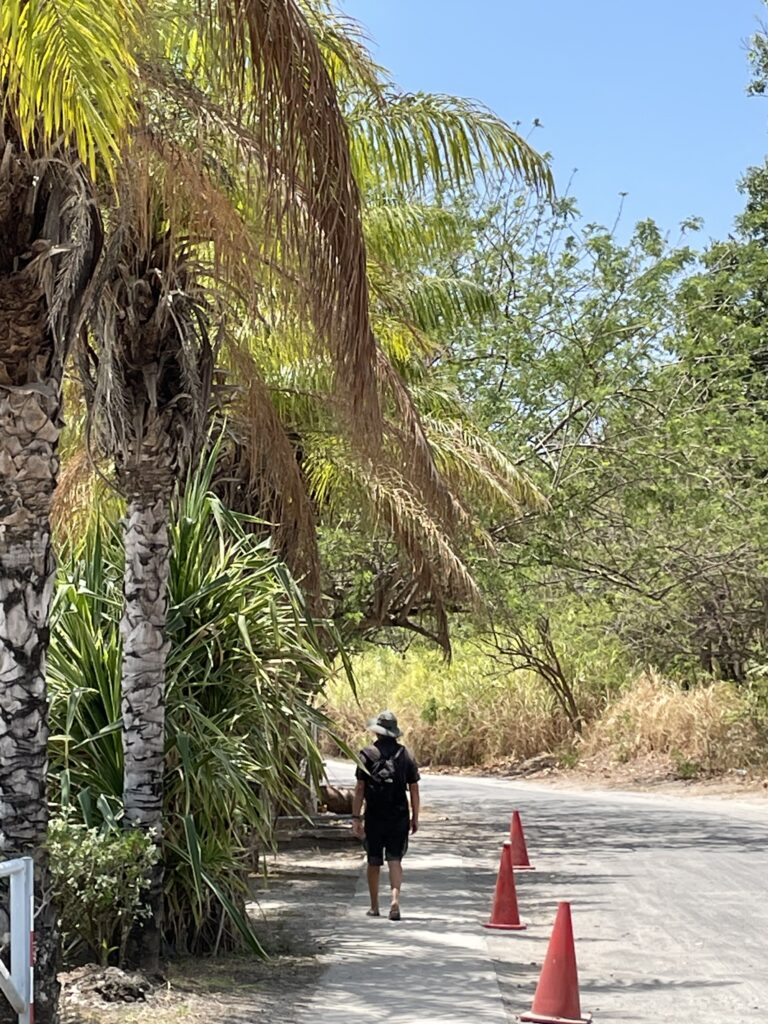
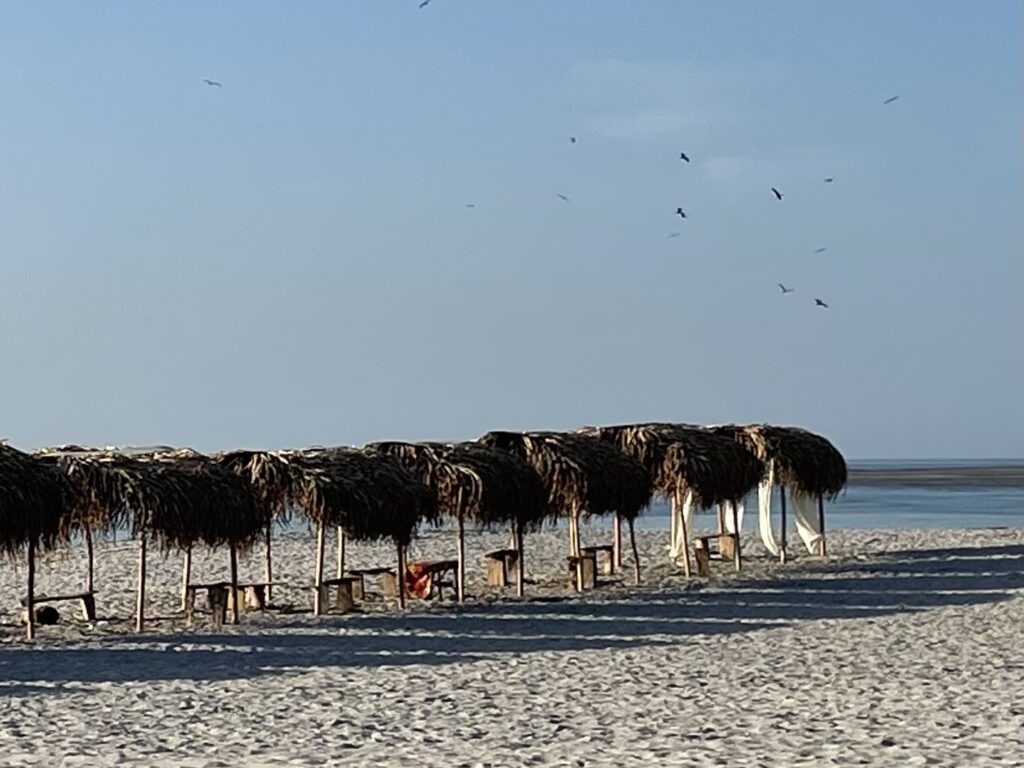
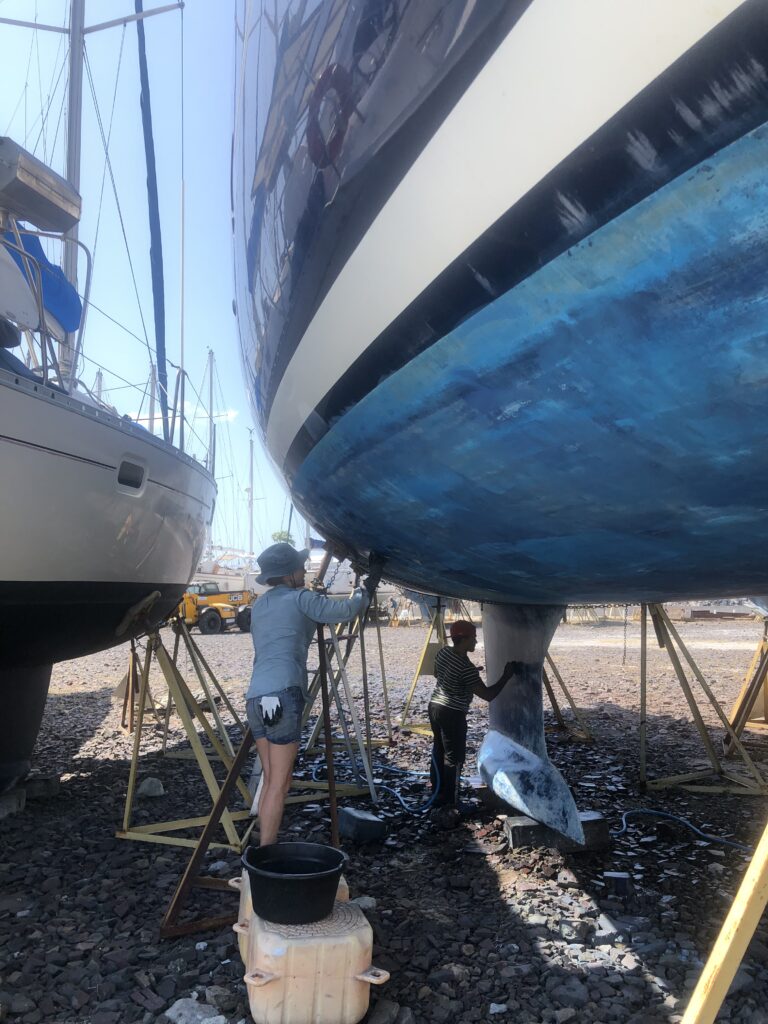
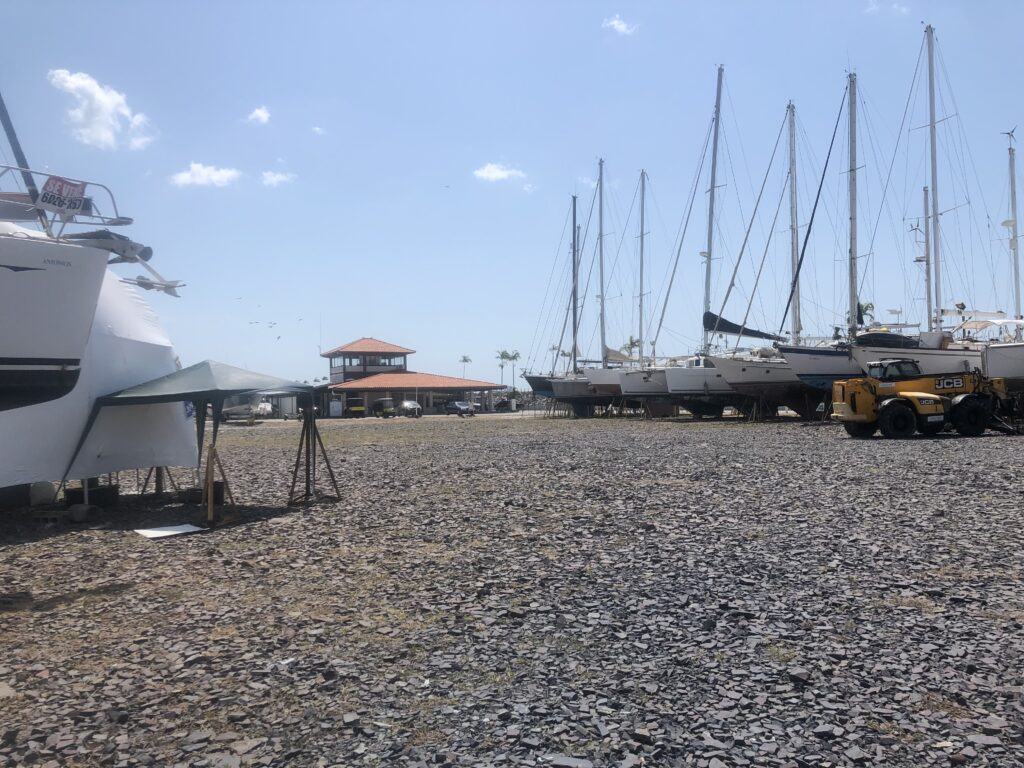

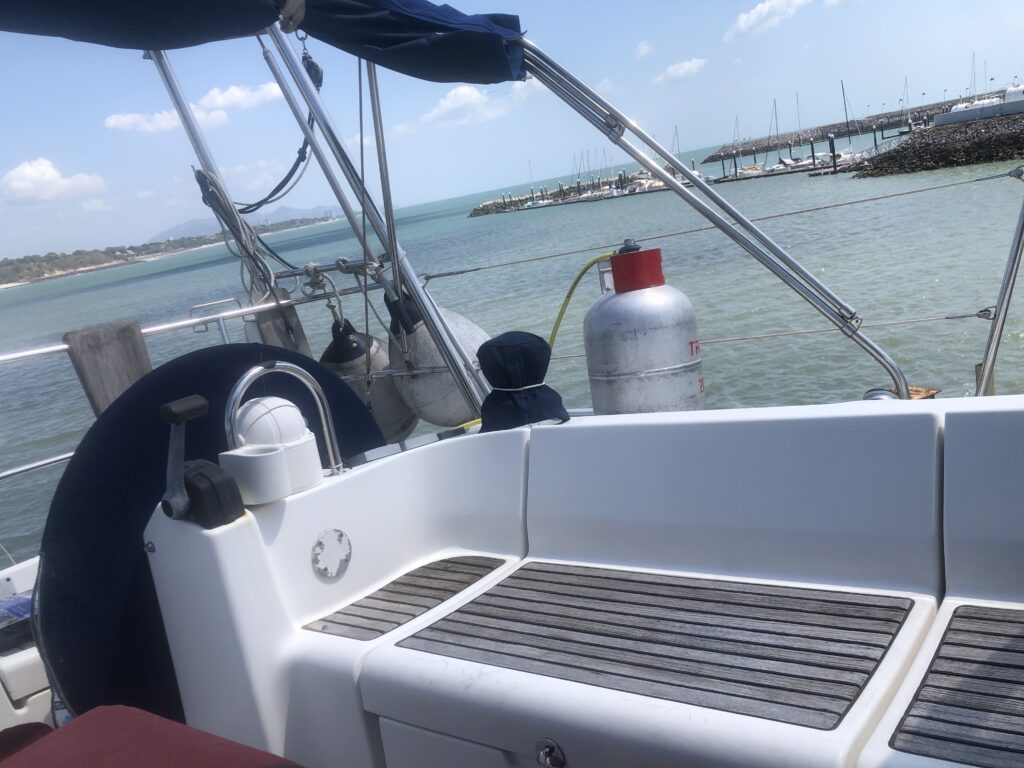

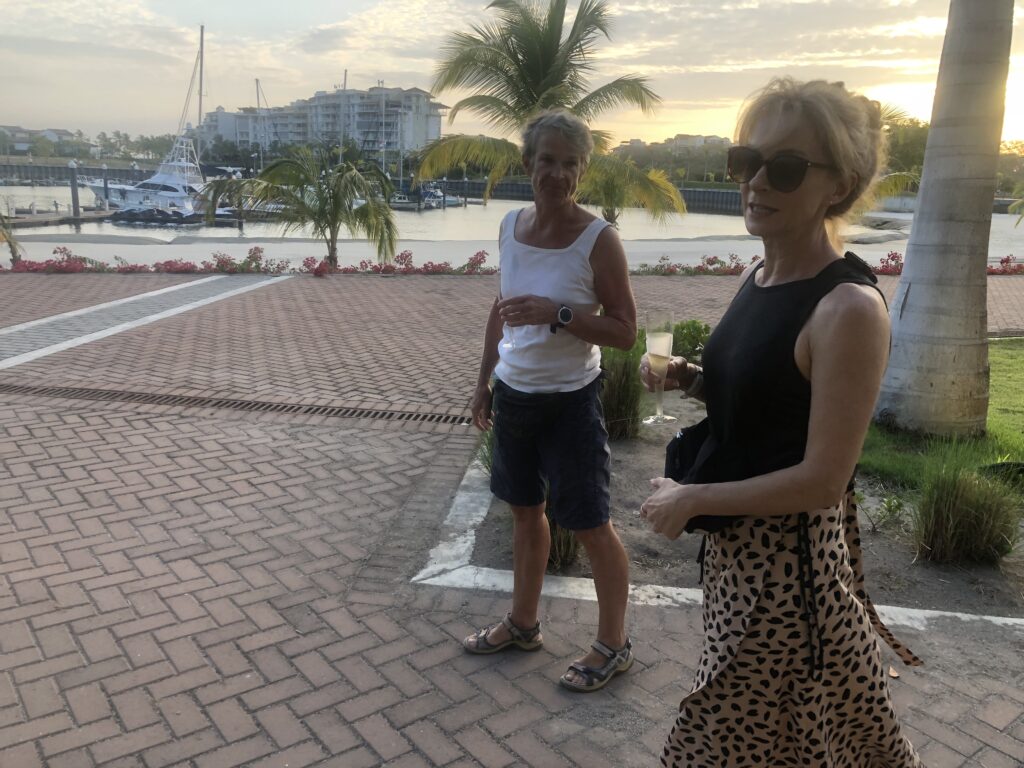

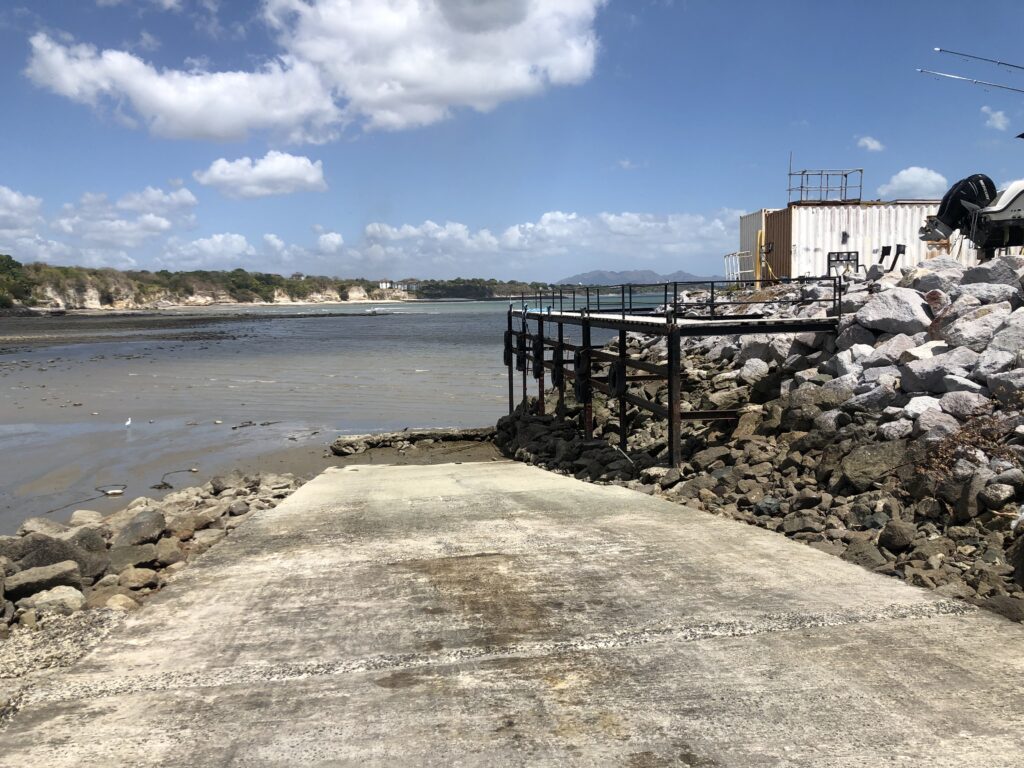
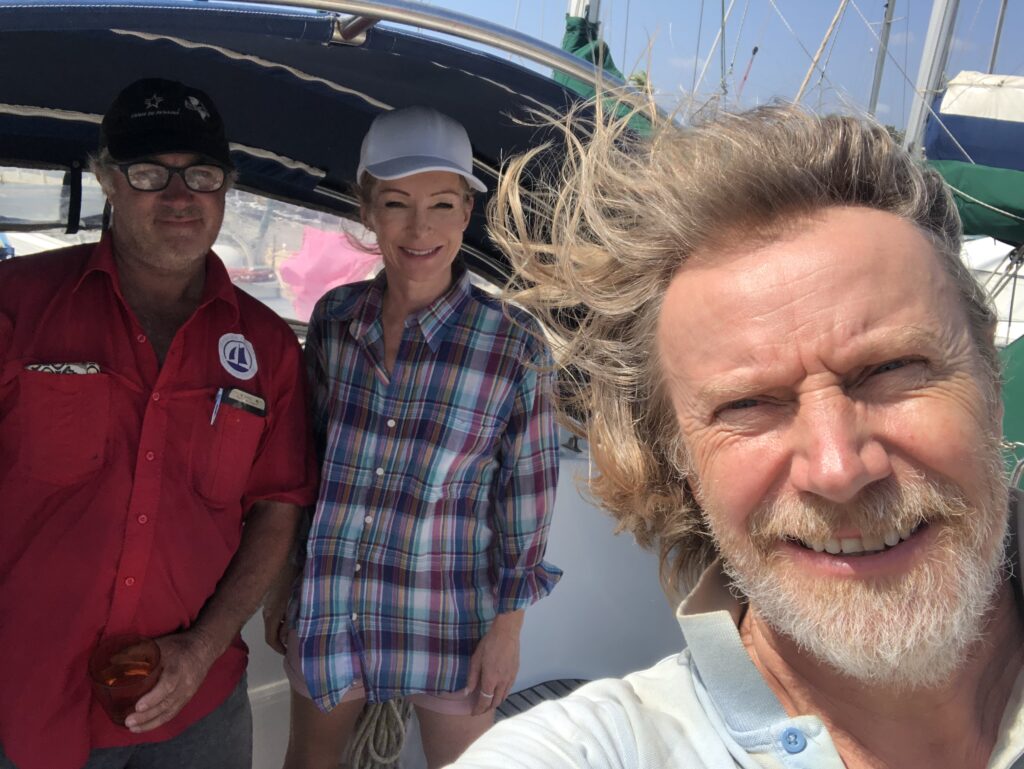

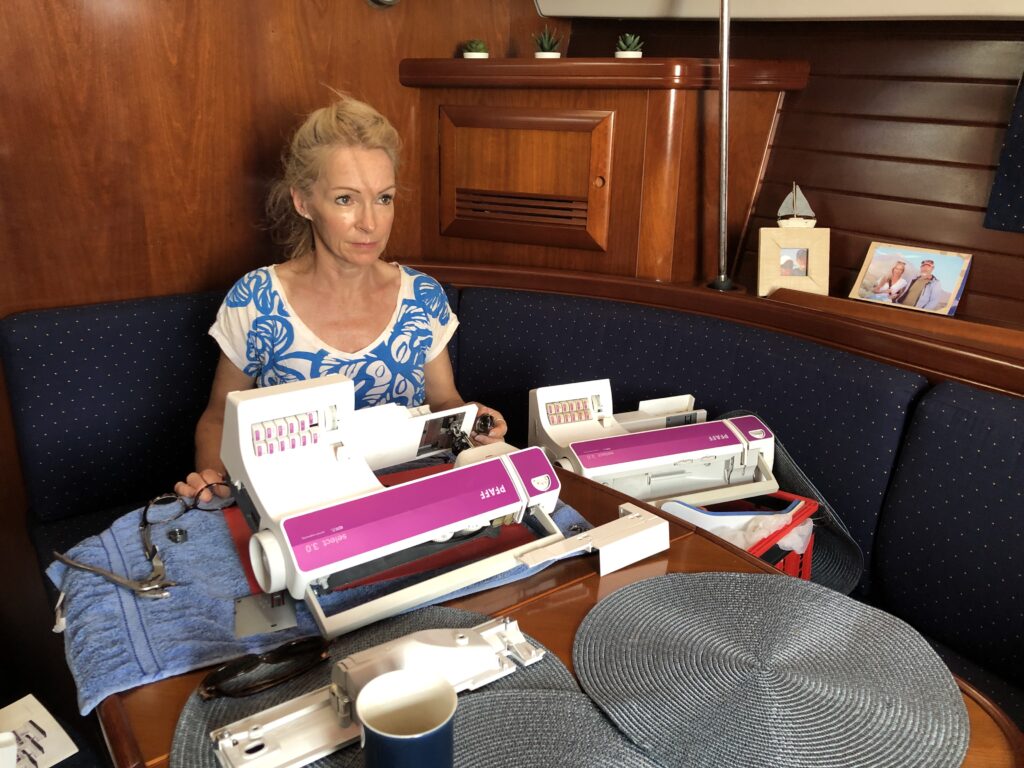
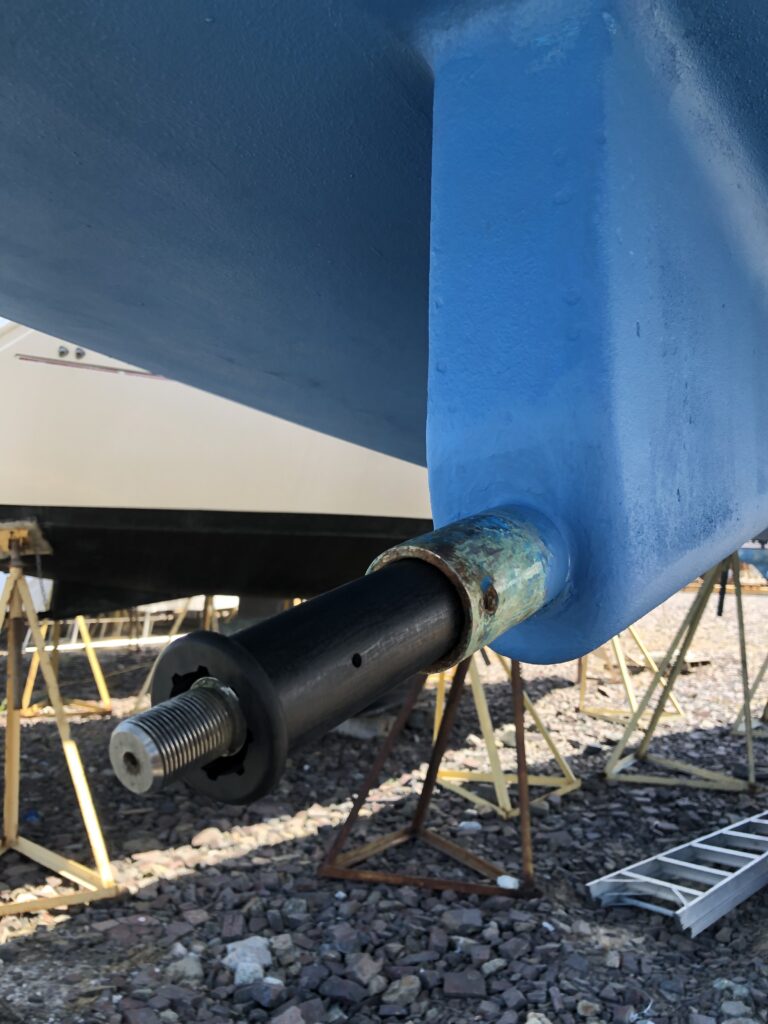
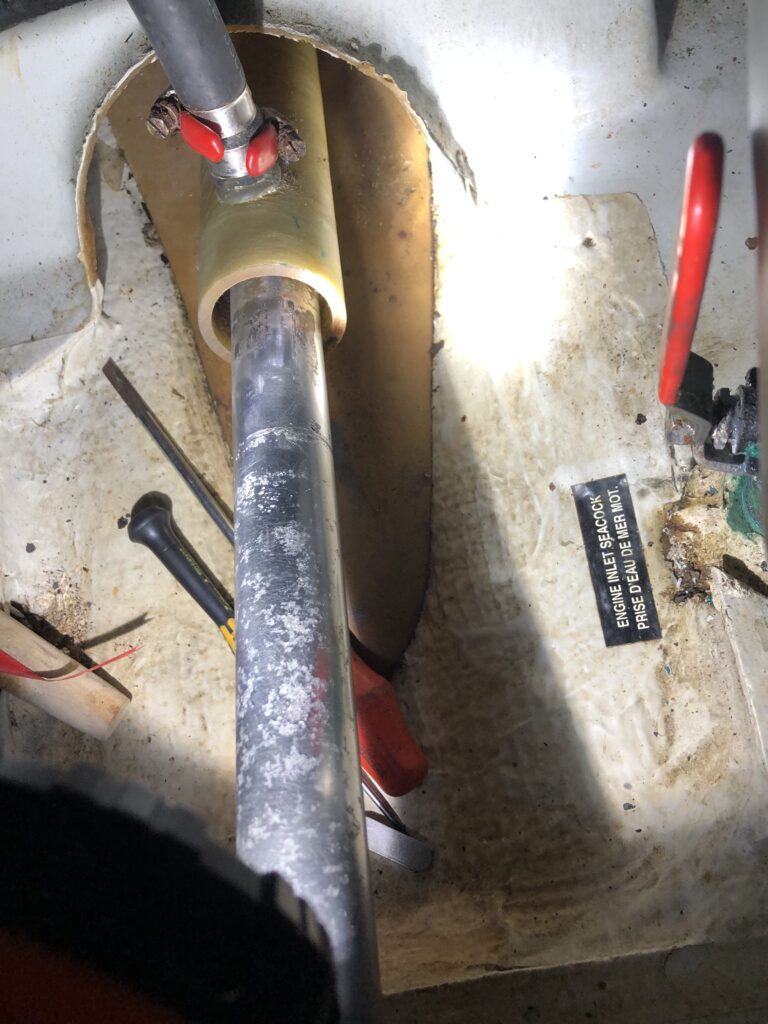
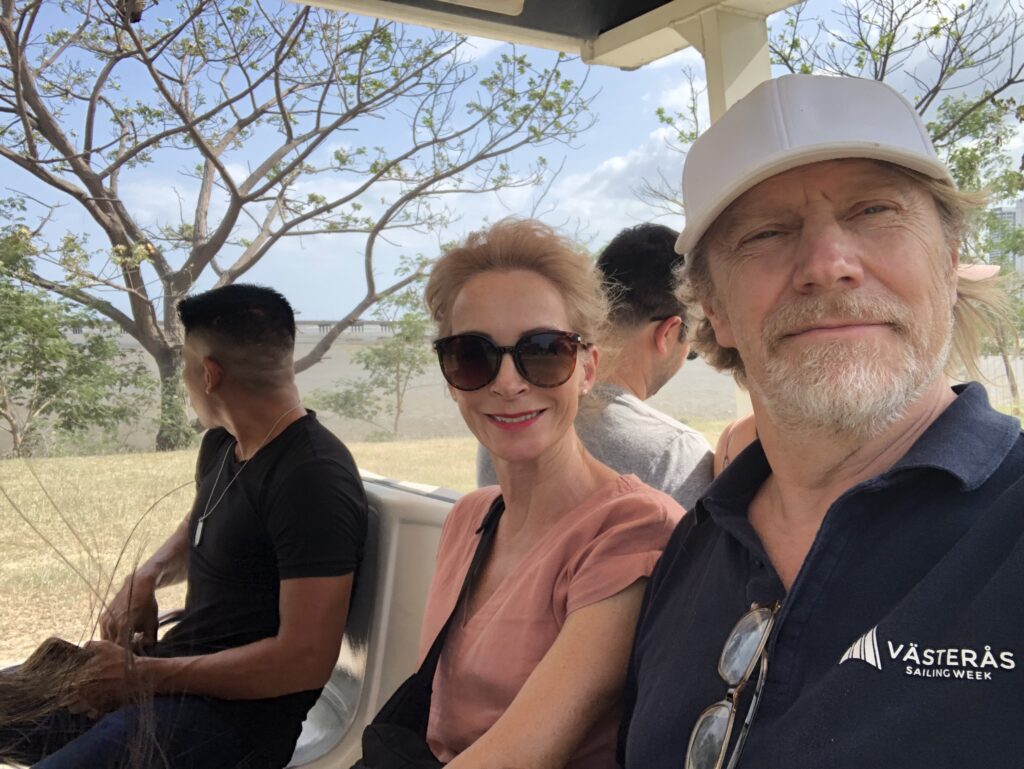
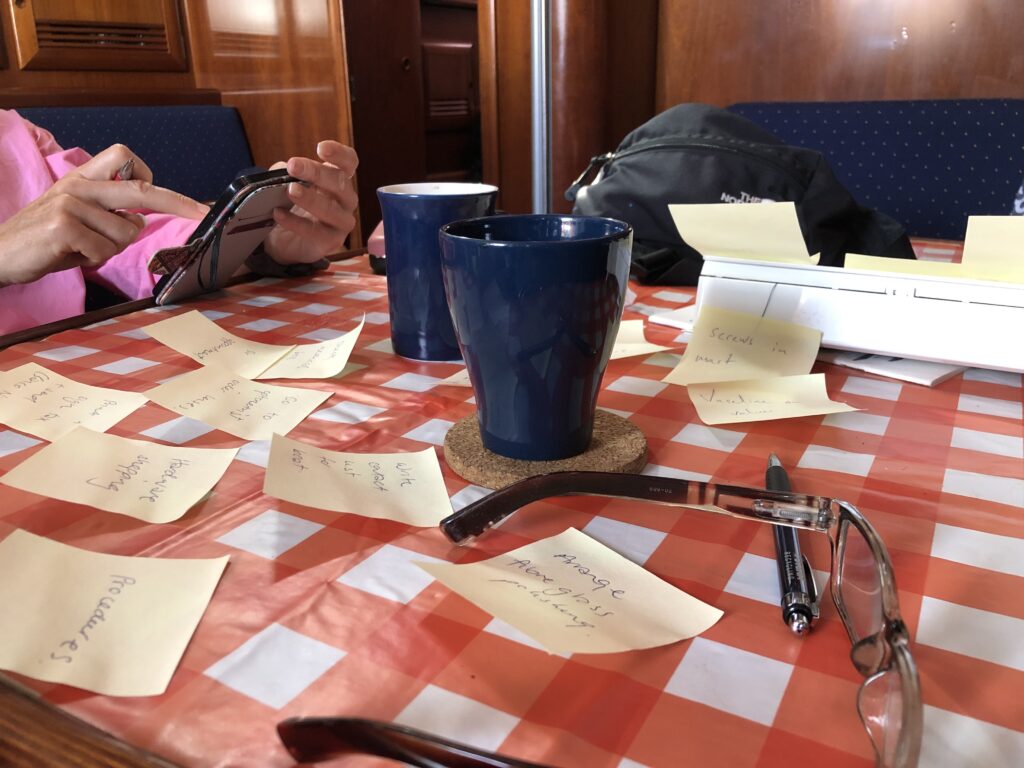
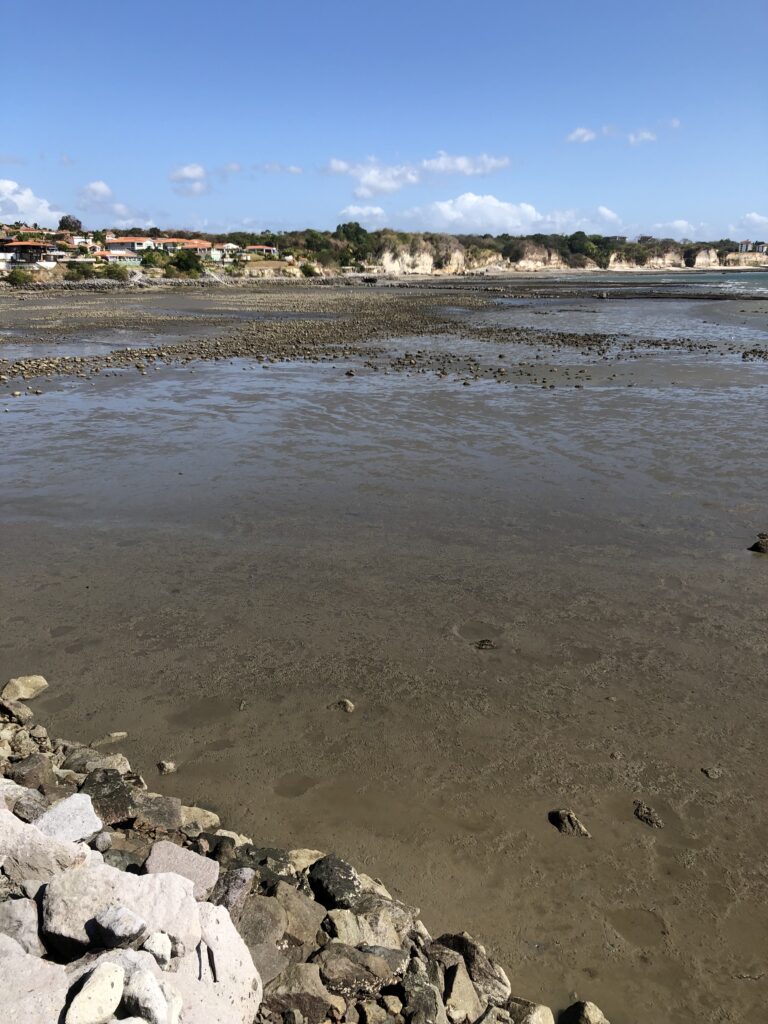
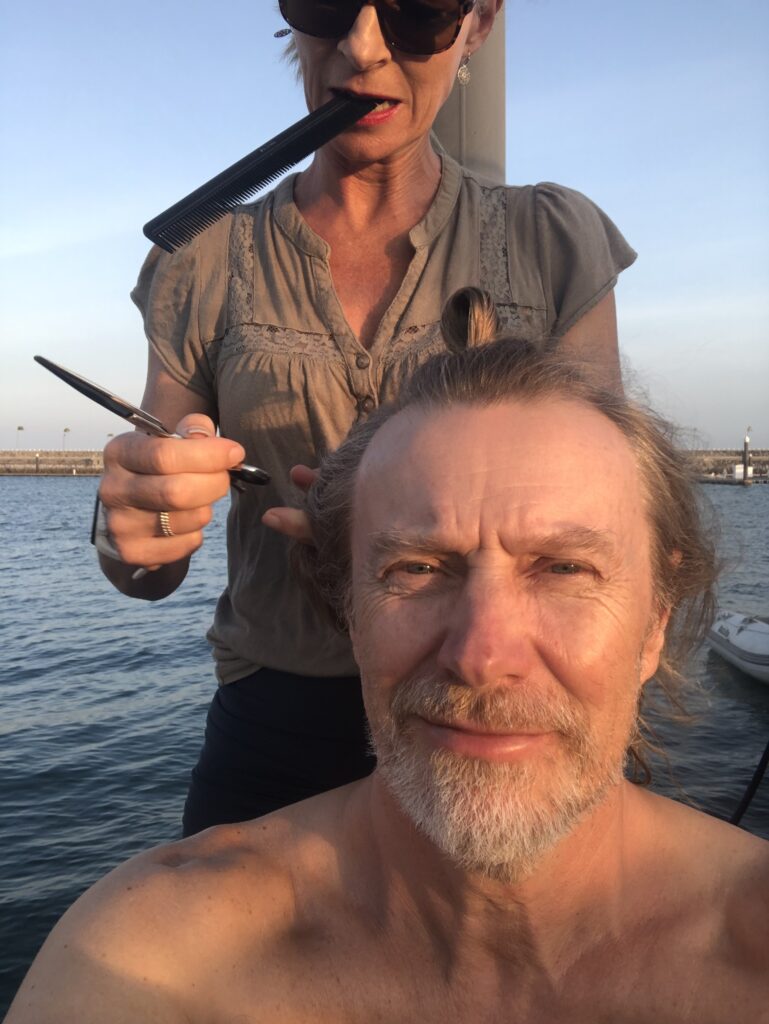
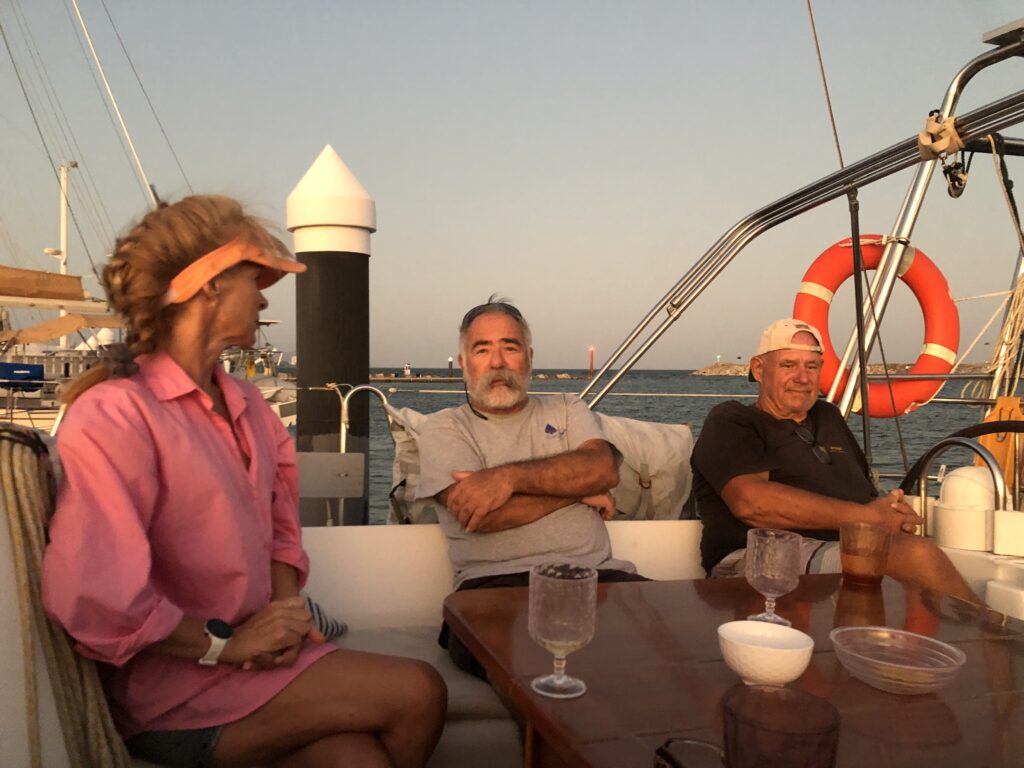
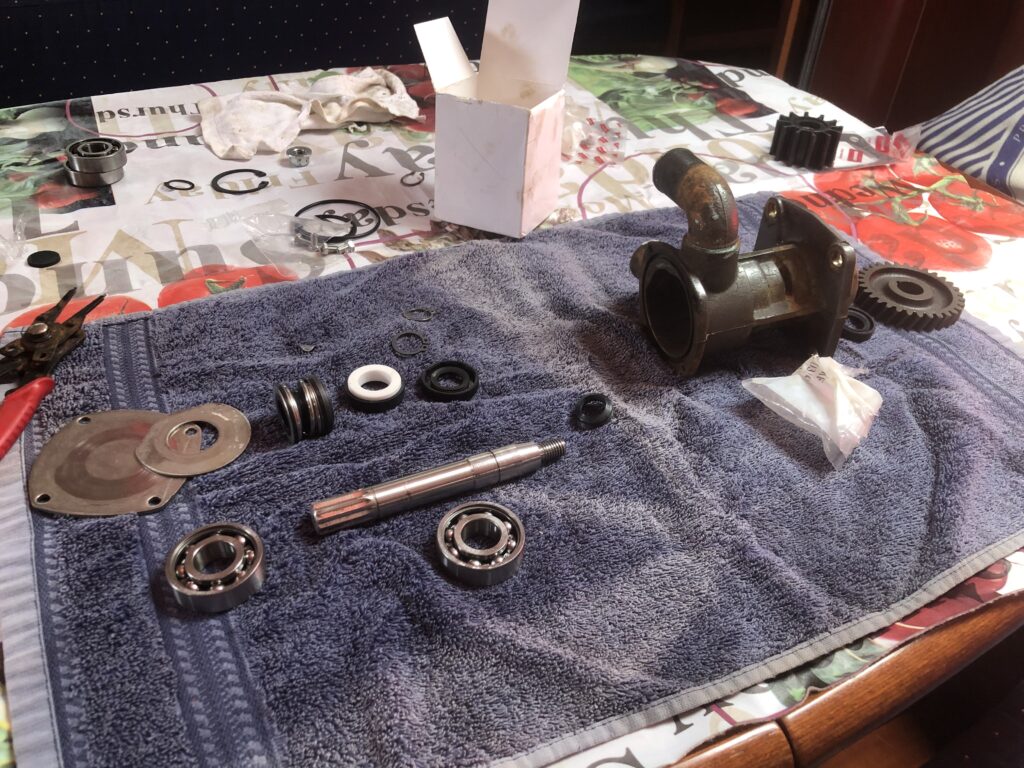
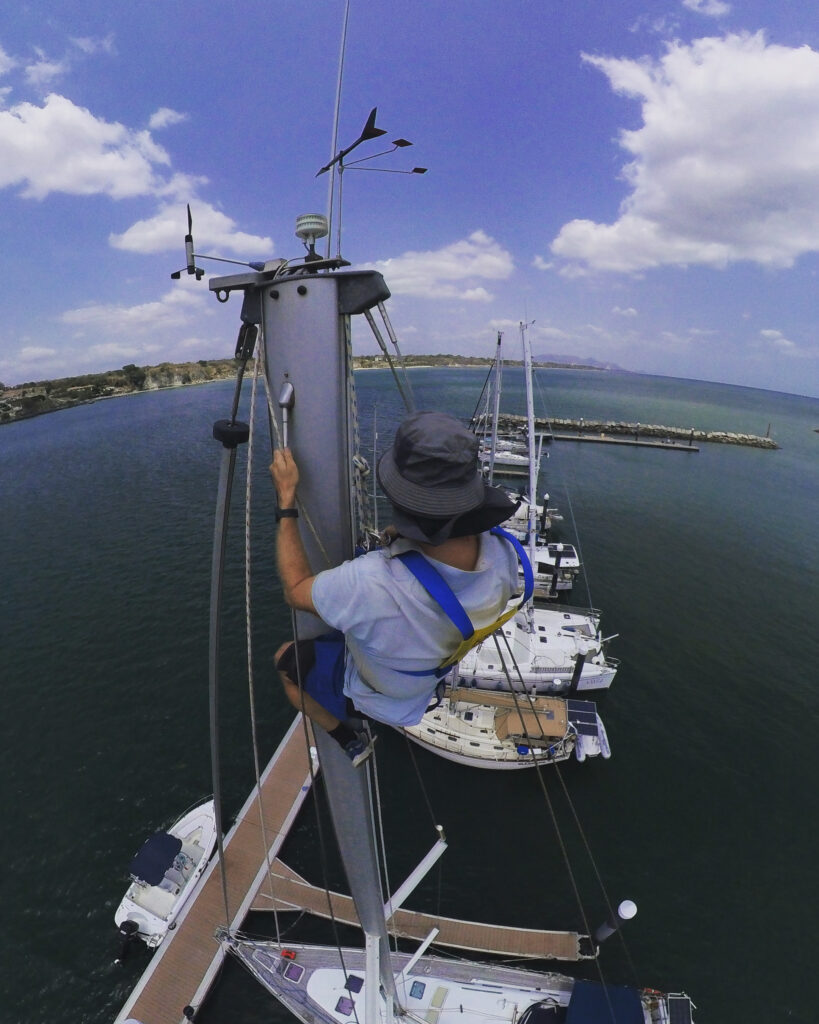
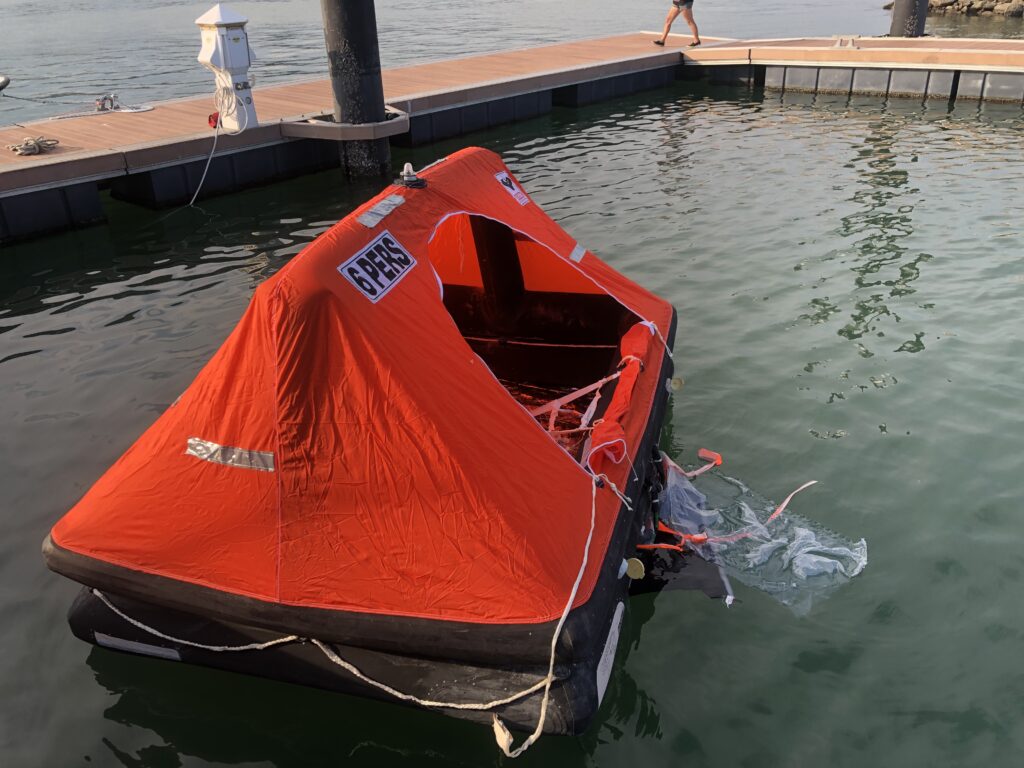
THE SWEDISH STUDENT
Denna månaden har vi träffat många trevliga människor, och en av dessa var Svensk. Han och vår kanadensiska granne lärde mig flera knopar och splicing tekniker. Jag har använt dem mest användbart redan.
This month we have met many lovely people, including a Swede. He and our nice Canadian neighbor taught me several knots and splicing techniques, which I have used usefully already.

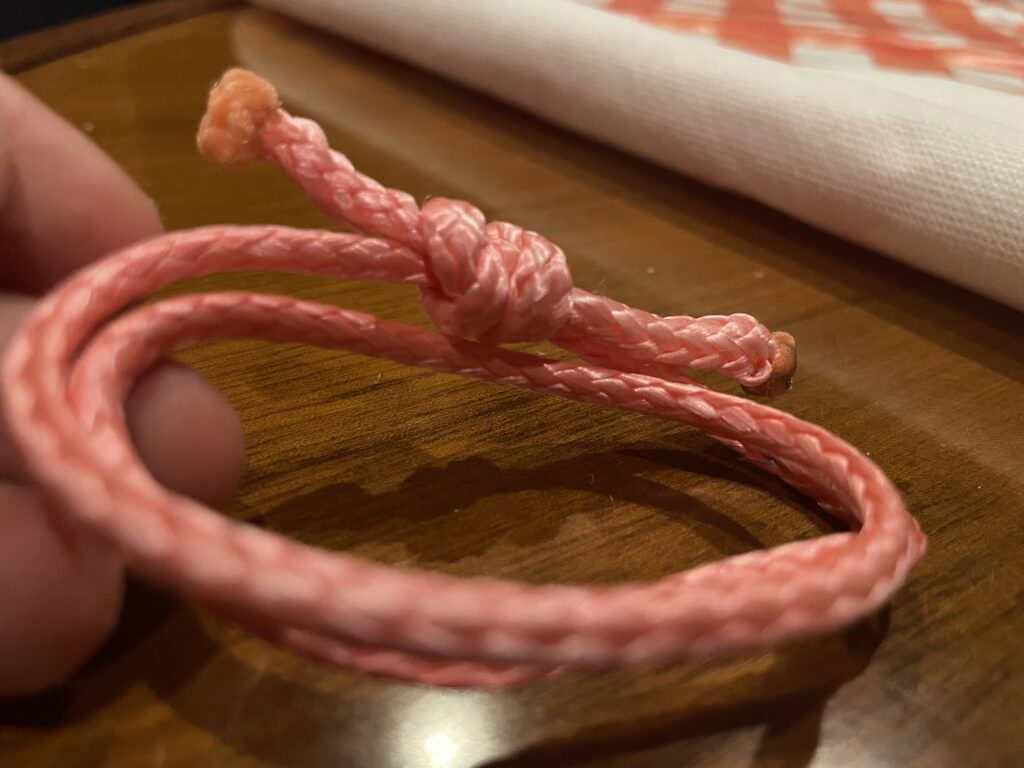
Another wonderful place full of mostly delightful memories for you to think back on as you cross the oceans. Safe travels, see you somewhere in the Pacific.
Hi there….I remember having to learn all these prep tasks…..lots of red-faced and some cursing. Not to mention dropping a vital piece if dinghy equipment into the Urangan Marina water….thankfully on the last day of my sailing journey. .
Better you than me Crossing the Ocean, but enjoy your journey.
Thanks Marg.
Arrived now, all well but a different beast to our Atlantic crossing. Yes the prep!! I am looking forward to feeling competent – but the horizon keeps looking further away. I can only think that at least I must know a little bit more than when I started! Better than standing still I guess.